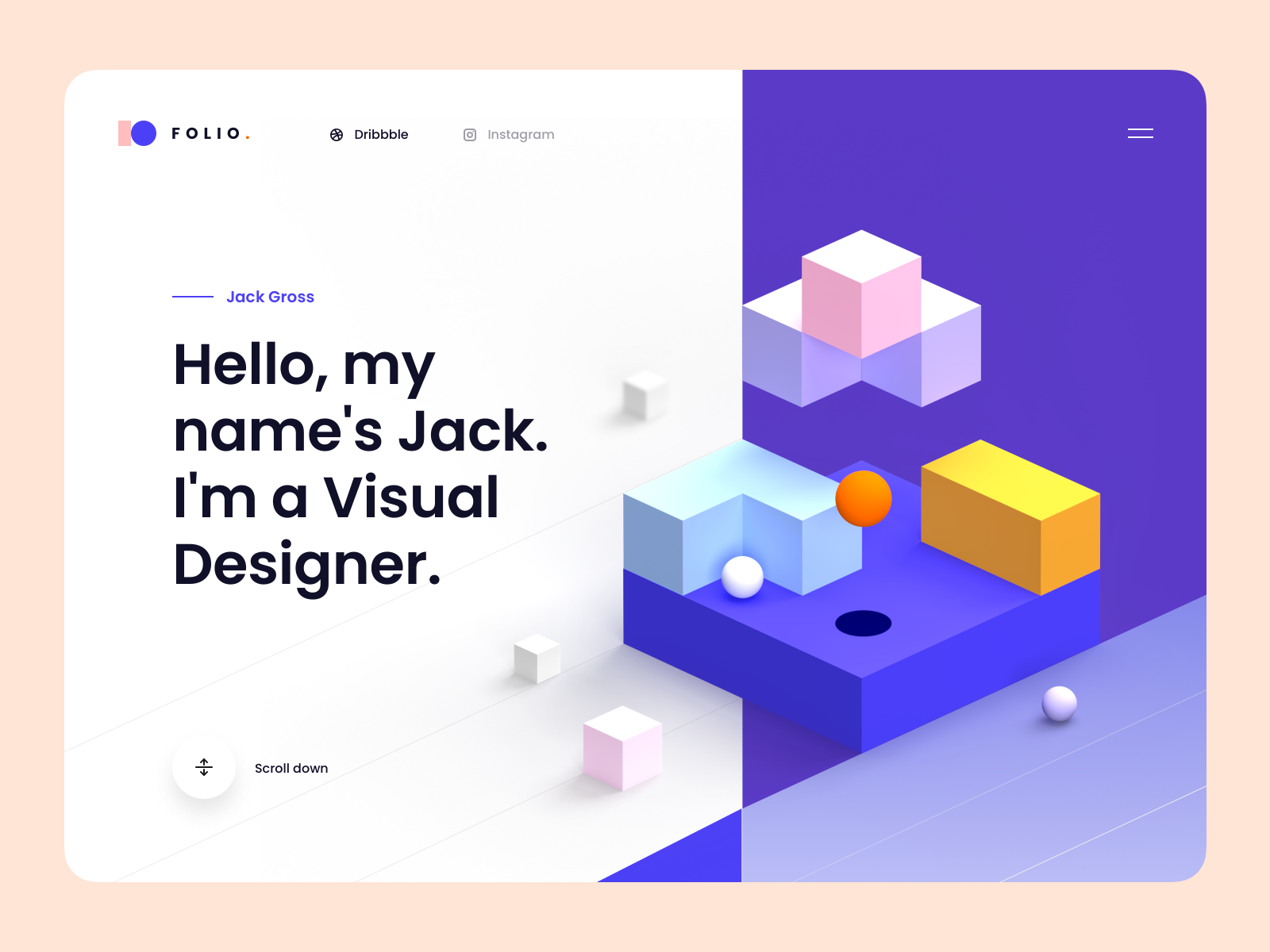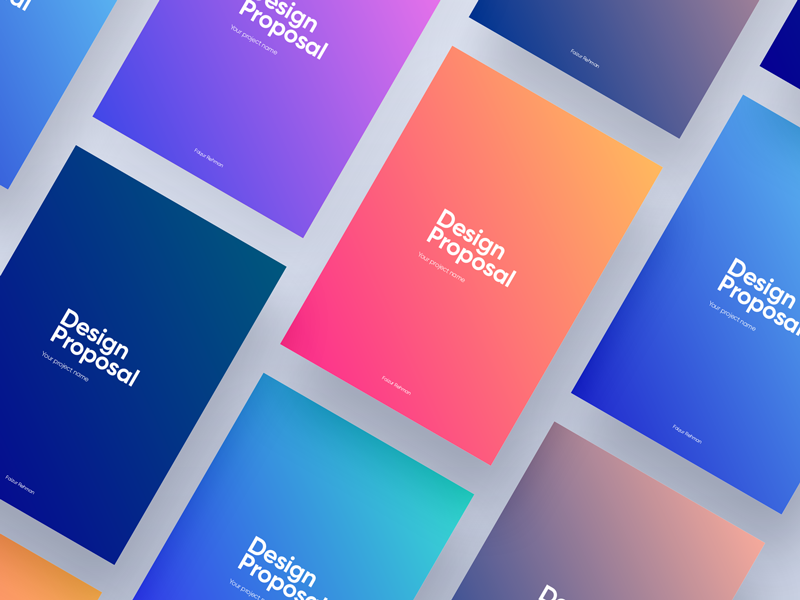Creating an online portfolio to showcase your work for designers and freelancers can be a sound investment. You’ll increase your online presence, and make it easier for people to find you.
In this article, we’ll go over how to choose the right platform for your needs, and how to design a professional-looking portfolio website. But first, let’s look at the most important factors you should consider when designing a portfolio website.
7 Principles of Effective Portfolio Website Design
- Think about your target audience
- Build trust through content and information — avoid nagging
- Use professionalism and clarity in your messaging
- Seduce the reader: use eye-catching design and fascinating imagery
- Utilize the Power of Visual Hierarchy in Your Work
- Make Your Site Meet the Needs of Your Visitors
- Avoid Using Scripting that is Too Code-Heavy or Too Browser-Heavy
What Goes Into a Portfolio Website?
When it comes to creating an online portfolio website, there really is no such thing as “one size fits all.” What this means is that you need to be sure to include enough information about yourself and your work to let people know exactly what they’re getting if they hire you. Designers and graphic designers will have different needs for their sites, so let’s take a look at what they’d each need to include.
If you’re a designer, chances are you’re more interested in sharing your work than your personal information. You’d also want a website that’s easy to use and lets you update it with the latest work you’ve done. While you’ll want a portfolio website that’s clean and professional, you should also try to have a little fun with it. Let your personality shine through!
So, there’s a lot to think about when it comes to creating a portfolio website. But don’t worry, we’ve got you covered. We’ll go over how to find the right platform for your needs, as well as how you can create a website that lets you showcase your work in a professional manner.
Finding the Right Platform
Before you get started on creating your own portfolio website, you’ll need to choose a platform for it. When it comes to choosing the right platform for your portfolio, it’s really up to you. The choice really comes down to whether you want to have more control over your website, or spend less money on it.
If you want to have more control over your website, you’ll want to use a self hosted platform. Free platforms offer you a lot of flexibility, and let you have a lot of control over your website. However, you’ll need to learn how to code, and be able to use a code editor to build your website.
When it comes to free platforms, the most common features include the ability to show off your work, including images and videos, a place to list your rates, and a place for people to contact you.
If you’ve chosen a paid platform, you’ll be able to get a lot of the same features as a free platform. However, you’ll also be able to display your work in a way that’s more professional.
The Importance of a Professional-Looking Portfolio
If you’re going to create a portfolio website, you should really think about what your audience is looking for. If you’re a freelancer, it’s likely you want to showcase your work, and let people know what you can do to help them. On the other hand, if you’re a designer, you’ll want to showcase your work and let people know why you’re the designer they should hire. You’ll need to think about what people are looking for when they hire someone to work on their website. Is it the experience of a designer? The experience of a freelancer? Or a combination of both?
Targeting the Desired Audience:
Know who you’re designing your website for. Consider who you’re going after, as well as why they’re looking for the services that you offer. Think about what questions they’re going to have as well in order to be as prepared as possible.
How to Make Your Portfolio Website Stand Out
If you’re going to create a portfolio website, you’ll want to stand out from the competition. You’ll want to make your website more memorable, and do it in a way that shows your personality. Once you’ve thought about what your audience is looking for, you’ll need to decide how you want to showcase it. This will be up to you, but chances are you’ll want to go with a design that’s clean and professional. You’ll also want to include a place for people to contact you, and a place for people to see your latest work.
Keeping Content Consistent Throughout Your Design:
Make sure all of the copy on your site is coherently spaced from other paragraphs so that they all stand out from each other when someone reads them. You can always increase readability by increasing the size of text or going with a headline font instead of body copy fonts. But, by being consistent across sections throughout a page, visitors not only find it easier to read everything on each page, but they also use less eye energy trying to decipher it.
What to Include in a Design Portfolio
When it comes to creating a portfolio website for yourself, you’ll want to include as many elements as you can, depending on how you want to showcase your work. You should also remember that everything is on a case by case basis. Not everyone will need everything, but you should look at each element and think about whether it would add value to you and your audience. If there’s something you haven’t included, that’s alright. The important thing is making sure to be consistent and clear with who you’re targeting with a given element.
Last but not least, make sure the site functions smoothly by adding all of the social media accounts you’d like to include. Add a contact form on your contact page and add links directly to your blog if you have one setup already.
Optimize your website
It’s important to note that without some sort of SEO (search engine optimization) for your site, you may not rank as highly as you could if your website was properly optimized. A quick and easy way to make sure your site is properly linked and search-engine optimized is to write semantic code and SEO friendly content. These small optimizations can bring in a lot of new business by being in the top spots in search engines like Google and allowing potential clients to find your portfolio more quickly with an optimized URL.
You are Done!
If you have followed all steps so far, voila! You’ve just brought together another point of pride for your design agency or design business — a professional-looking online portfolio website!
Your Turn: Have any questions or suggestions regarding how to build a design portfolio? We’d love for you to share your thoughts below!
Banner Illustration by Tran Mau Tri Tam



